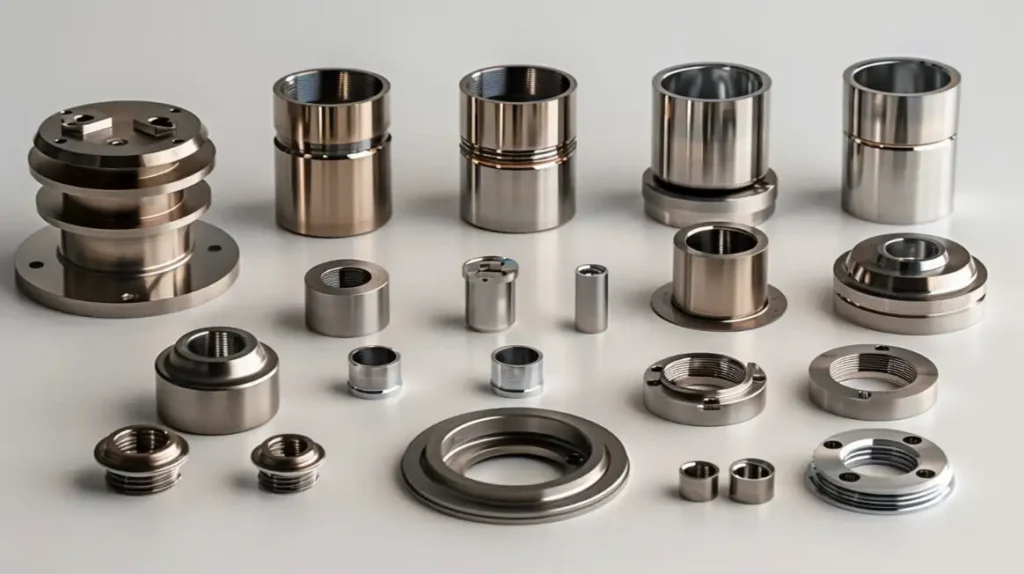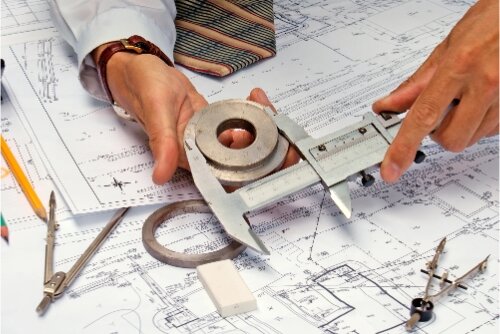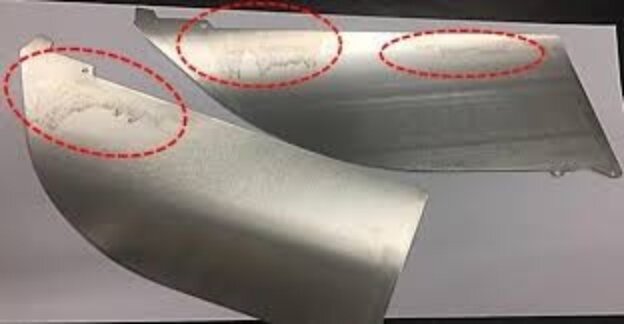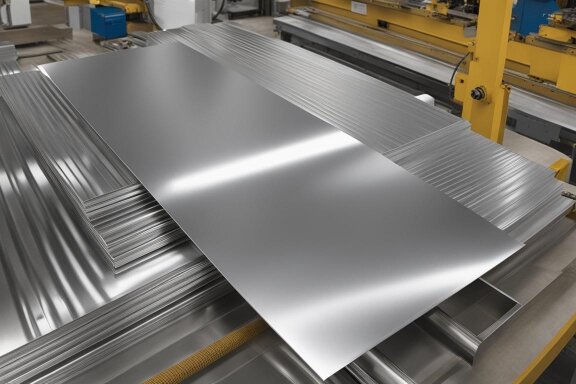Stainless steel is strong, but it can still corrode over time. In harsh conditions, it loses its shine and can wear down faster. Manufacturers need a way to make it last longer while keeping its sleek look. Nickel plating solves this problem by adding a protective layer. It boosts durability, resists corrosion, and gives the surface a polished finish.
Nickel plating enhances stainless steel by adding a thin, durable layer. This layer improves wear resistance, prevents rust, and creates a smooth, attractive surface. It also reduces friction, making parts last longer.
Nickel plating is standard in industries that need strong and stylish metal parts. It is used in aerospace, automotive, and medical equipment. But how does it work? Let’s examine the process and its benefits.
What Is Nickel Plating?
Nickel plating is a process that applies a thin layer of nickel to a metal surface using an electrochemical method. The nickel layer adds extra protection and improves the metal’s appearance.
Nickel plating creates a protective barrier that prevents oxidation and surface damage. It extends the lifespan of stainless steel components and enhances their performance in harsh environments. Industries use it for both functional and decorative purposes.
Key Properties of Nickel as a Coating Material
Nickel coatings offer excellent hardness (400-550 HV), strong corrosion resistance, good thermal stability up to 700°F, electrical conductivity, and magnetic properties. These coatings can be controlled for thickness (typically 5-50 microns) and finish (bright, semi-bright, or satin).
Why Nickel Plate Stainless Steel?
Stainless steel is already durable, but nickel plating takes it to the next level. Here’s why you might choose to nickel plate stainless steel:
Corrosion Resistance Enhancement
Stainless steel resists rust, but nickel plating adds an extra layer of protection. This is especially useful in environments with high humidity, saltwater, or chemicals. The nickel layer acts as a barrier, preventing corrosion and extending the life of the steel.
Improved Wear and Abrasion Resistance
Nickel is more complex than stainless steel, so plating makes the surface more resistant to scratches, wear, and abrasion. This is important for parts that experience friction or heavy use.
Aesthetic and Functional Benefits
Nickel plating gives stainless steel a bright, reflective finish that looks professional and attractive. Its functional advantages make it a practical choice for industrial applications.
Nickel Plating Stainless Steel Process Steps
Nickel plating stainless steel involves several key steps to ensure a strong, even, and durable coating. Here’s a step-by-step overview of the process:
Step 1: Cleaning the Surface
Before plating, the stainless steel must be thoroughly cleaned. Any dirt, oil, or rust on the surface can prevent the nickel from bonding properly.
Step 2: Preparing the Surface
After cleaning, the steel is often treated to improve adhesion. This might involve:
- Activation: Dipping the steel in an acid solution to create a reactive surface.
- Rinsing Again: Ensures no residues remain before plating.
Step 3: Electroplating
The steel is submerged in a plating bath containing nickel ions. An electric current is passed through the solution, causing the nickel ions to bond to the steel’s surface.
Step 4: Rinsing and Drying
Once plating is complete, the steel is rinsed to remove any leftover plating solution. It’s then dried to prevent water spots or corrosion.
Step 5: Post-Treatment (Optional)
For added protection or appearance, the plated steel might undergo:
- Polishing: Enhances the shine and smoothness of the nickel layer.
- Passivation: Treats the surface to improve corrosion resistance further.

Types of Nickel Plating for Stainless Steel
Nickel plating comes in different forms, each with unique properties and applications. Here’s a breakdown of the most common types:
Electroless Nickel Plating (ENP)
Electroless nickel plating doesn’t use electricity. Instead, it uses a chemical reaction to deposit nickel onto the stainless steel. Key features include:
- Uniform Coating: Covers all surfaces evenly, even complex shapes.
- High Hardness: Provides excellent wear resistance.
- Corrosion Resistance: Offers strong protection against rust and chemicals.
- Phosphorus Content: ENP often includes phosphorus, which enhances durability.
This method is ideal for parts with intricate designs or those needing consistent thickness.
Electrolytic Nickel Plating
Electrolytic nickel plating uses an electric current to deposit nickel onto the steel. It’s the most common type of plating. Key features include:
- Thickness Control: Allows precise control over the nickel layer’s thickness.
- Bright Finish: Produces a shiny, reflective surface.
- Cost-Effective: Generally cheaper than electroless plating.
- Versatility: Suitable for a wide range of applications.
This method is widely used in the automotive, electronics, and decorative industries.
Black Nickel Plating
Black nickel plating creates a dark, matte finish. It’s often used for aesthetic or functional purposes. Key features include:
- Decorative Appeal: Provides a sleek, modern look.
- Light Absorption: Useful for reducing glare in optical or scientific equipment.
- Wear Resistance: Offers decent durability, though not as strong as other types.
This type is popular in consumer electronics, jewelry, and architectural applications.
Bright vs. Dull Nickel Plating
The finish of nickel plating can vary based on the process and additives used:
Bright Nickel Plating:
- Produces a shiny, reflective surface.
- Often used for decorative purposes or parts requiring a polished look.
- Contains brightening agents in the plating solution.
Dull Nickel Plating:
- Creates a matte or semi-gloss finish.
- Used for functional parts where appearance is less critical.
- Provides similar corrosion and wear resistance as bright nickel.
Choosing between bright and dull plating depends on the desired look and function of the finished product.
Factors to Consider
Several factors come into play when deciding on nickel plating for stainless steel. Here’s what to think about:
Corrosion Resistance Requirements
- Environment: Consider where the plated steel will be used. High humidity, salt water, or chemical exposure may require thicker or more specialized plating.
- Longevity: Determine the coating’s required life. Electroless nickel plating often provides better long-term corrosion resistance.
- Material Compatibility: Ensure the nickel layer bonds well with the stainless steel to avoid peeling or flaking.
Desired Appearance and Finish
- Aesthetic Needs: Decide if the part needs a shiny, reflective finish (bright nickel) or a matte look (dull or black nickel).
- Surface Texture: Consider whether the plating should hide or highlight surface imperfections.
- Color: Black nickel offers a unique dark finish, while traditional nickel provides a metallic shine.
Mechanical Properties and Durability Needs
- Wear Resistance: Choose a more complex plating like electroless nickel for parts exposed to friction or abrasion.
- Heat Resistance: If the part will face high temperatures, ensure the plating can withstand the heat without degrading.
- Strength: Evaluate whether the nickel layer needs structural support or surface protection.
Cost
- Budget: Electrolytic nickel plating is generally cheaper, while electroless plating costs more due to its advanced properties.
- Volume: Larger projects may benefit from economies of scale, reducing the cost per unit.
- Long-Term Savings: Consider if investing in a more durable plating will save money on replacements or maintenance over time.

Applications of Nickel-Plated Stainless Steel
Nickel-plated stainless steel is used in many industries because of its durability, corrosion resistance, and aesthetic appeal. Here are some key applications:
Automotive
- Exhaust Systems: Nickel plating protects against high temperatures and corrosion.
- Trim and Decorative Parts: Provides a shiny, polished look for grilles, handles, and badges.
- Fasteners: Enhances durability and prevents rust in bolts, screws, and nuts.
Medical Devices
- Surgical Instruments: Nickel plating ensures corrosion resistance and easy sterilization.
- Implants: Offers biocompatibility and long-term durability for medical implants.
- Equipment Enclosure: Protects sensitive medical equipment from wear and chemical exposure.
Pharmaceutical Industry
- Processing Equipment: Resists corrosion from chemicals and cleaning agents.
- Storage Tanks: Provides a hygienic, easy-to-clean surface for storing liquids and powders.
- Piping Systems: Ensures long-lasting performance in fluid transport systems.
Electrical Connectors
- Connectors and Terminals: Prevents corrosion and ensures reliable electrical conductivity.
- Solar Panels: Protect components from environmental damage.
- Switches and Relays: Enhances durability and performance in high-use applications.
Alternatives to Nickel Plating
If nickel plating isn’t suitable, other options are available:
- Zinc Plating: Cheaper and suitable for corrosion resistance but less durable than nickel.
- Chrome Plating: Offers a similar look and durability but is more expensive.
- Powder Coating: Provides a thick, durable layer but lacks the metallic finish of plating.
Each option has pros and cons, so choose based on your needs.
Conclusion
Nickel plating stainless steel enhances durability, corrosion resistance, and appearance. It protects against wear, extends lifespan, and improves surface properties for various industries. Choosing the right plating type depends on performance needs, cost, and application.
Ready to enhance your stainless steel components with nickel plating? Contact our engineering team today for a free consultation on your specific application. Our experts will help determine the optimal plating specifications for your needs and provide a detailed quote within 24 hours.
FAQs
Can nickel plating be applied to all types of stainless steel?
Yes, nickel plating works on most stainless steel grades. Proper surface preparation ensures strong adhesion and durability. Some alloys may require special pre-treatment.
How does nickel plating compare to other metal coatings?
Nickel plating offers superior corrosion resistance, wear protection, and aesthetic appeal. It provides better durability and a more uniform finish than zinc or chrome plating.
What is the typical lifespan of nickel-plated stainless steel?
Lifespan depends on the environment and coating thickness. In controlled conditions, it can last decades. Harsh environments may require periodic re-plating.
Can nickel plating be removed or repaired?
Yes, nickel plating can be removed using chemical stripping or mechanical methods like grinding. Repairs involve re-plating the affected area.
Hey, I'm Kevin Lee

For the past 10 years, I’ve been immersed in various forms of sheet metal fabrication, sharing cool insights here from my experiences across diverse workshops.
Get in touch

Kevin Lee
I have over ten years of professional experience in sheet metal fabrication, specializing in laser cutting, bending, welding, and surface treatment techniques. As the Technical Director at Shengen, I am committed to solving complex manufacturing challenges and driving innovation and quality in each project.




